
views
- Build concrete forms out of 2x4s or 2x6s. Level and compact the dirt or gravel within the forms.
- Pour the concrete into the forms then smooth and level it out with a 2x4 and a tool called a bull float.
- Apply a surface retarder, cover the concrete with plastic, let it cure for up to 24 hours, then remove the plastic and the forms.
- Cut the concrete into sections to prevent cracking, then seal it.
Installing Concrete Forms

Build a wooden box. This box will hold the concrete in place until it is fully cured. It is important it is symmetrical and nailed together properly because your concrete pad will resemble this box. Use 2x4s in order to obtain 4 inch thick concrete. Use 2x6s in order to obtain 6 inch thick concrete. To make a curved shape pad, you must use a more flexible kind of wood.
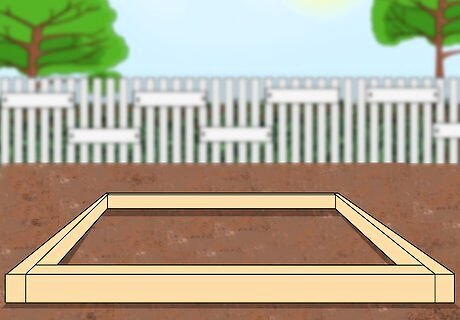
Place the box in the designated area. This area must be relatively flat.
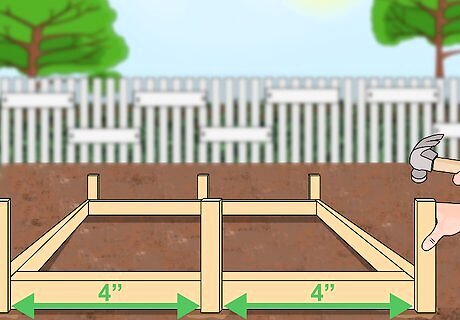
Hammer stakes in along the perimeter. The stakes will hold the box in place. It is best to put a stake at each end of the board, then fill in the middle with stakes at roughly 4 feet apart. To make sure your board is strait, run a string from one end of the board to the other end.
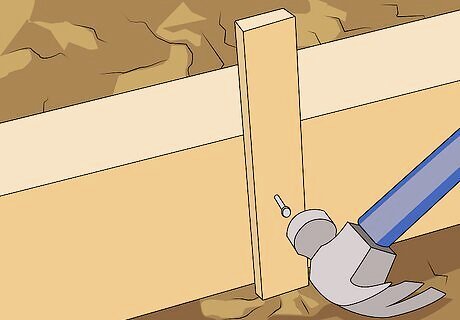
Bring the box to the appropriate height and nail it to the stakes. The box must be level, but if it is a large surface it is best to lower one side of the box slightly so rain will run off the edge once it is finished. To make the surface of the concrete even with the ground, you must dig down 4 inches. To make the concrete pad above ground, just nail it into the stakes.
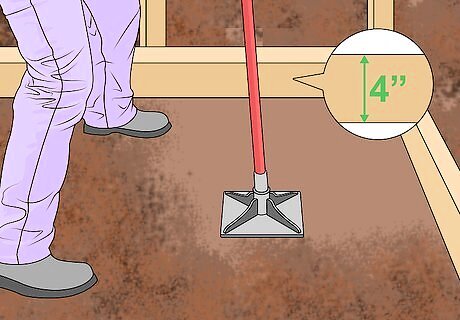
Level and compact the surface within the box. Now since the forms are set, make sure all of the ground within the box is at least 4 inches deep, and compact it by using a compactor or stamper. To check depth, run a string across from the top of each form and measure down making sure it is 4 inches. This is also referred to as "Grade". Now would also be the time to add steel mesh or re-steel, if you have it (for strengthening purposes).
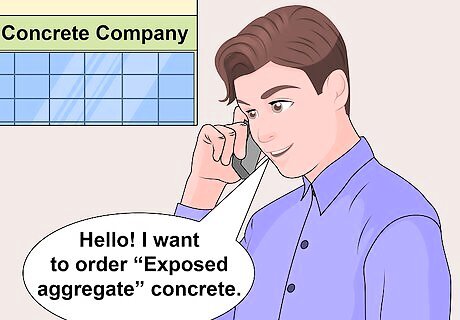
Call and order concrete from your local concrete company. Call and ask for exposed aggregate concrete. They will inform you on what it is and different options they offer. As for amount, concrete is purchased by the yard. If you have trouble figuring out how much is needed, tell the concrete company your square footage and thickness. One yard of concrete is the equivalent to 81 square feet per 4 inch thick concrete. The equivalent for 6 inch thick concrete is 54 square feet. To figure out the square footage of a rectangle or square the equation is length times width.
Pouring, Leveling, and Smoothing
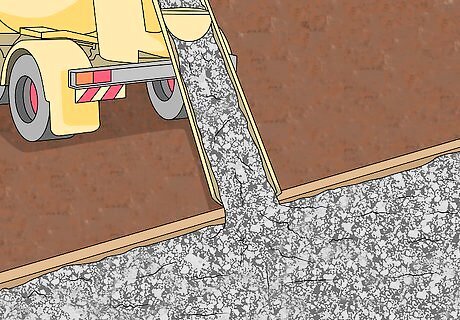
Pour the concrete into your forms. This step can be tricky depending on where your pad is. It is easy if a concrete truck can reach the pad with its' chute, but if not you will have to use a wheel barrow or power buggy to move the concrete from the truck to the forms. The concrete must be poured quickly so you have time to move it into place while it is still wet.
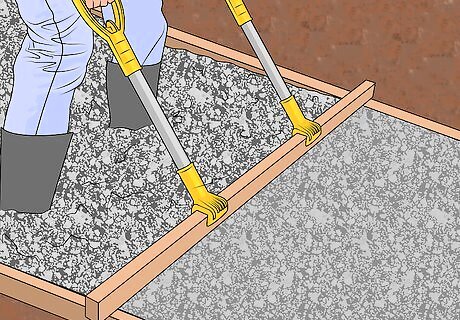
Screed the concrete. Essentially, screeding is leveling out the top of the concrete. Run a strait board on the top of your forms across the concrete, if there is a large pile-up, have someone rake back the pile so you can proceed with the screed process. It is best to have one person on each side of the screed board and pull back the concrete simultaneously. If your pad is too large or not in a position to be screeded from the outside, one person or both people must stand inside the pad and do your best to run the board along the 2x4s. If you cannot perform these two methods for screeding, it is suggested you seek help from a more advanced concrete finisher.

Bull float the concrete. Bull floating is the first step of smoothing out the concrete. It will knock down all of the rocks and bring the "creamy" concrete mix to the surface. Doing this correctly should leave your pad flat and smooth with no holes. The "wetter" the concrete is, the easier it will seal all the holes up; if you wait to long to bull float, it will be hard to seal the surface. If some holes will not close up, you can sprinkle some water to aid in the process.
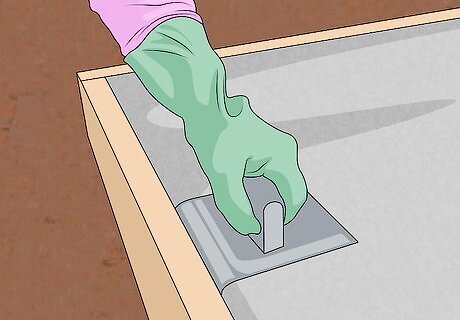
Hand float and hand edge along the outside. Hand edging the concrete will create a nice rounded edge as opposed to a sharp rigid one. It will also seal the edge. If an error is created in the edging process, use the hand float to clean up along the edge. The hand float should be used to seal up any holes that are reachable.
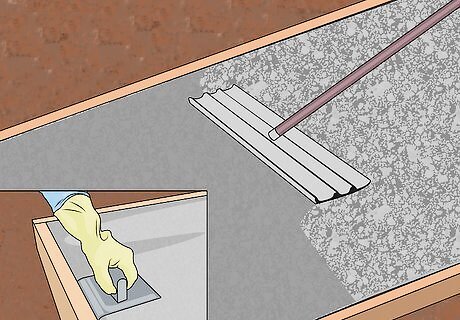
Finish bull float and edging. After the first round of sealing the surface by bull floating and edging, it is generally time to do the process over again. The objective is to get the bull float lines and edger lines to go away, while the top remains smooth. This may take some time depending on weather, if the sun is out it it will dry up quicker. There is a video tagged in these instructions that will help you learn how to properly finish concrete.
Curing, Cutting, and Sealing
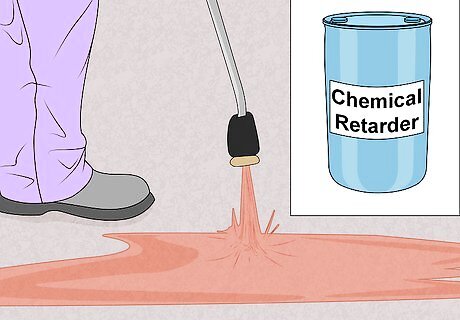
Spray the surface with retarder. Once you have finished the top and it is smooth with no lines or air holes, it is time to spray it with a chemical retarder. The retarder chemical will keep the top layer of concrete wet while it lets the core harden. Try to disperse it evenly amongst the surface. Making one spot wetter than another will cause that spot to give away faster and potentially cause holes in the washing away process.
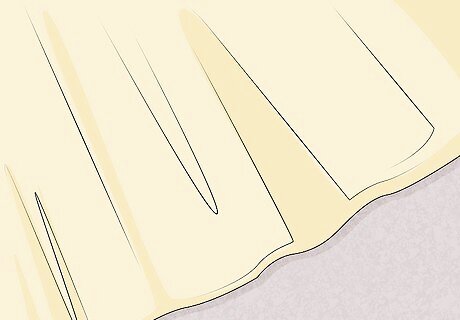
Cover the whole surface with nylon plastic. The surface must be covered after the retarder is sprayed in order to lock in moisture, prevent wind from drying out the top, and to keep it out of direct sunlight. Make sure your plastic is big enough to cover the whole pad with some wiggle room so you can weigh it down along the edge. Gently lay the plastic down on the surface of the concrete so you do not create any smudges.
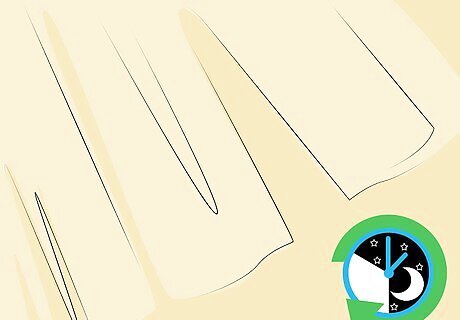
Let it harden. Now you must wait for it to harden. Depending on when you poured it and how wet the concrete was at that time, you generally need to wait roughly 10-24 hours for the core to harden. Do not wait to long to check, because the retarder and plastic cover can only keep the top from hardening for so long. It is best to let it sit over night and check it in the morning unless you poured it very early, in which case you can check it later that day.
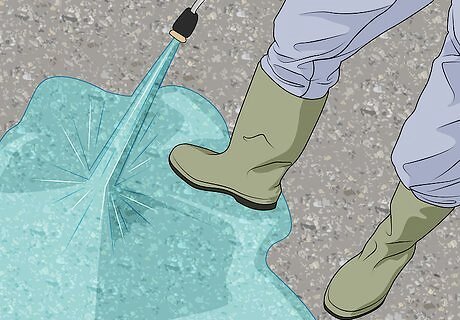
Remove the plastic and hose off the top. Removing the plastic should be no problem. It should be safe to walk on now. Start hosing off the top evenly amongst the surface. The creamy top layer should start to wash away exposing the pea stone gravel underneath. Use a broom to help brush off the top layer if it is not washing away easily. Be careful to not focus in one area for too long, doing so can create rivets. Pea stone should be exposed evenly throughout the surface.
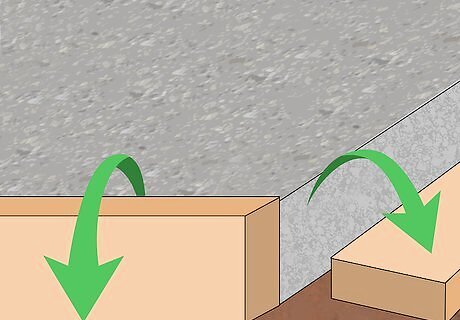
Remove the forms. Removing the forms while the concrete is still wet can cause trouble so as long as it has hardened, removing them is an easy process. Just remove the stakes and take out any nails and the 2x4 boards should pop right off. Forms can be reused for future jobs.

Saw cut the pad. Concrete WILL crack. It is unknown when it will crack but it WILL crack. Saw cutting it essentially says to the concrete "Crack Here". So instead of an obscure crack throughout the whole surface, it will crack along the specific saw cut lines you have set out for it. Which will make it look better and last longer. Make the saw cuts symmetrical. Square pads are cut into squares for symmetry, do not let the saw cut lines extend for more than 10' by 10'.
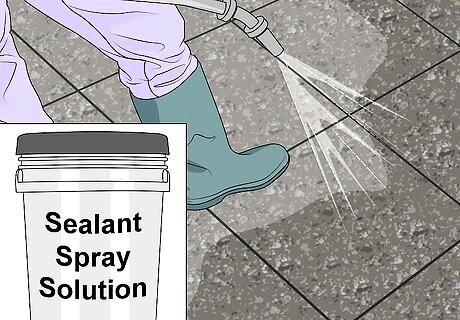
Seal the surface. Sealing the surface with a sealant spray solution will make the surface more weather resistant and prevent erosion. It will also bring out the true colors of the pea stone and generally make a shinier surface. Make sure the surface is clean and free of any stains before hand. Disperse the spray evenly amongst the surface for best results.




















Comments
0 comment